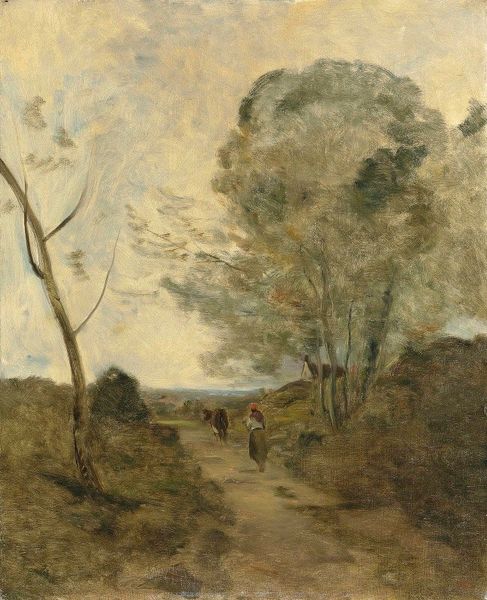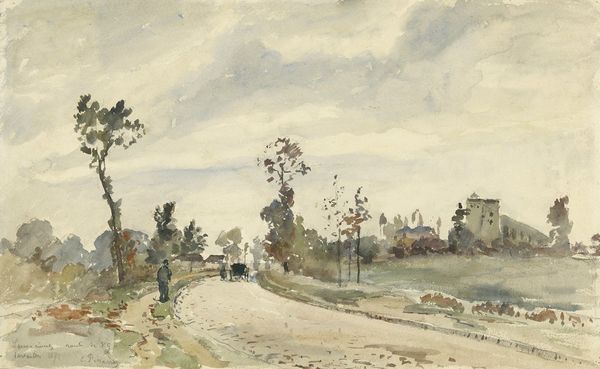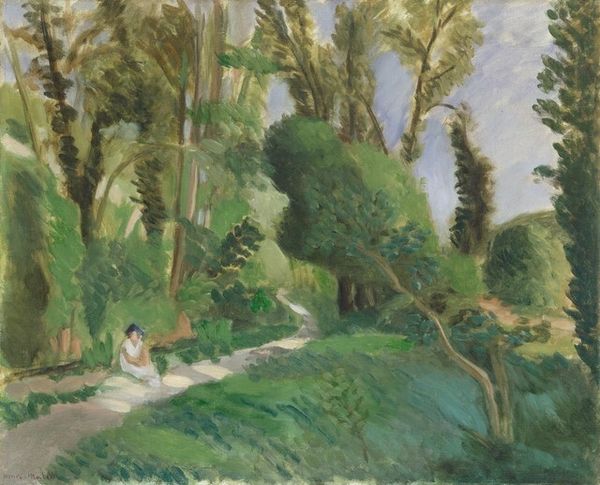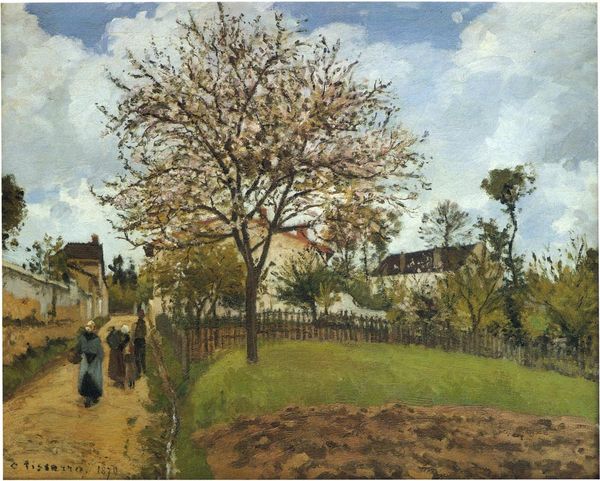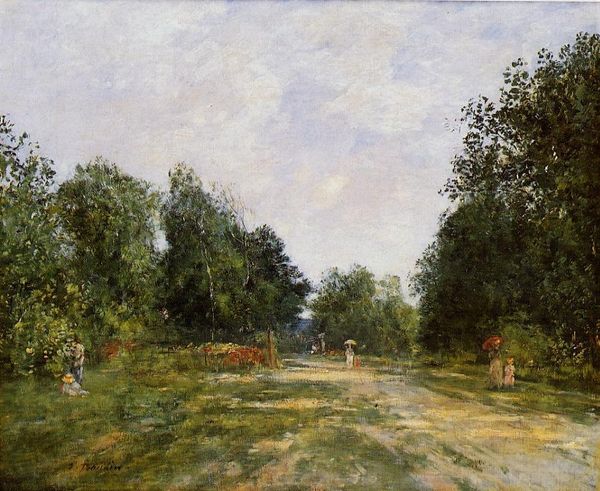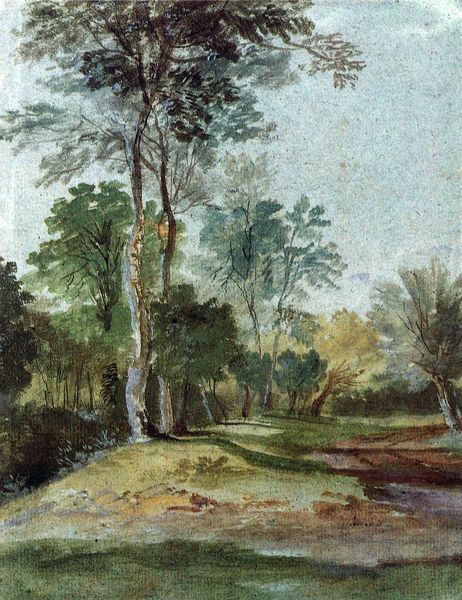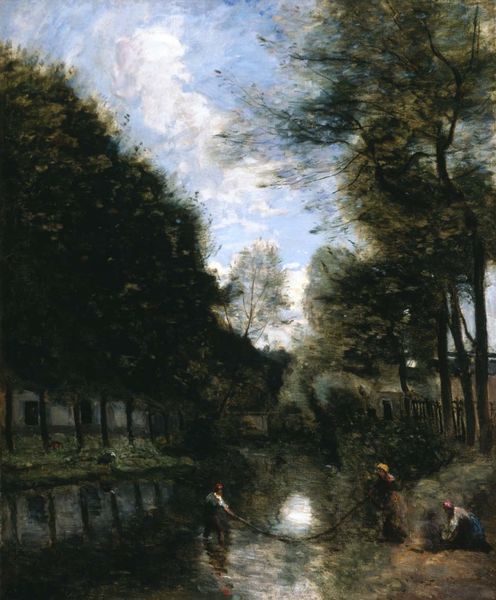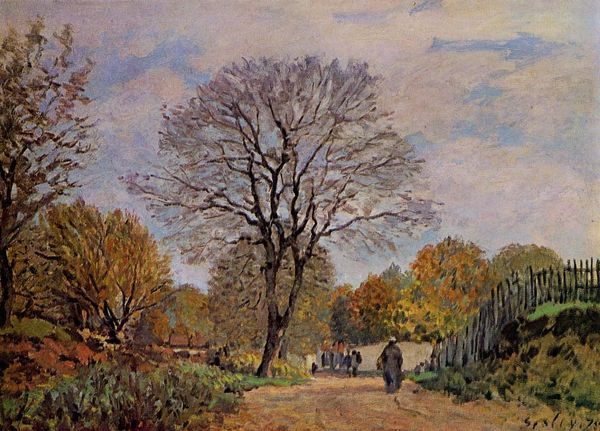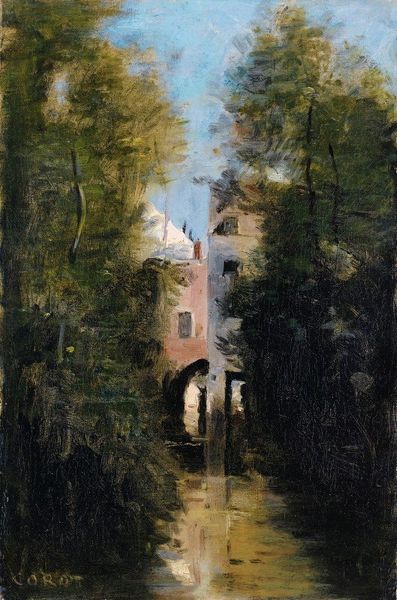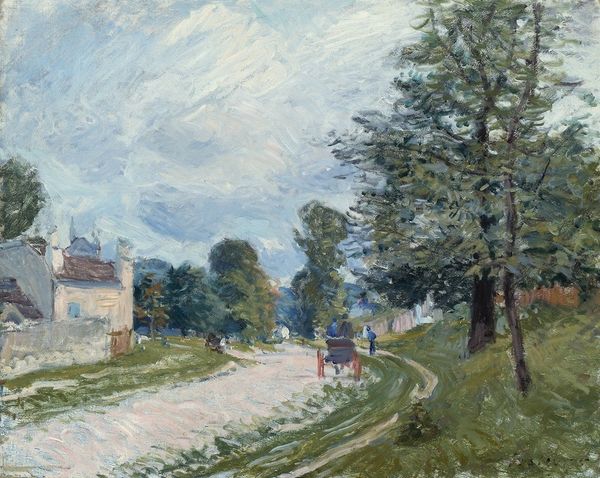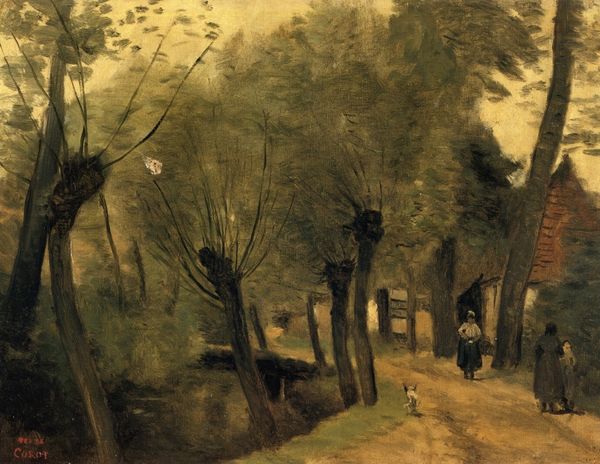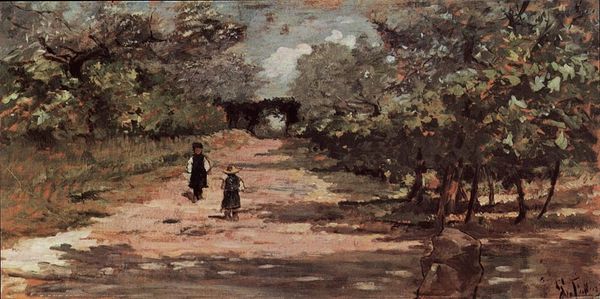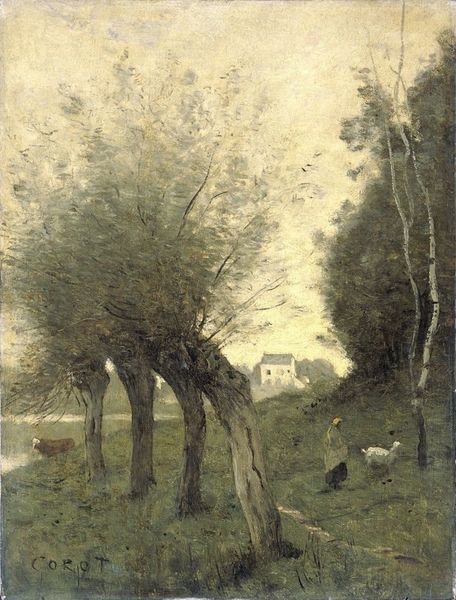
painting, oil-paint
#
painting
#
oil-paint
#
landscape
#
impressionist landscape
#
oil painting
#
geometric
#
cityscape
#
post-impressionism
#
street
Copyright: Public domain
Editor: This is "Avenue de l'Observatoire," an oil painting by Henri Rousseau, painted in 1898. There's something quite dreamlike about it, especially with the way the trees frame the scene. How do you interpret this work? Curator: It’s tempting to read this through a biographical lens; Rousseau's position as an outsider, a self-taught artist, certainly shaped how his work was received. But let’s think about the “naïve” label often attached to him. Was it truly about technical skill, or did it serve a social function, reinforcing existing hierarchies within the art world? Consider the Salon des Indépendants where Rousseau exhibited. It provided a platform for artists outside the established Salon system. Editor: So, his style challenged the traditional art institutions? Curator: Precisely! And this cityscape, so seemingly straightforward, becomes more complex when viewed through that lens. Notice the geometric simplicity, the flattened perspective. Is that "naïveté" or a deliberate choice to reject academic conventions and assert a different kind of vision? How does Rousseau, the self-proclaimed Sunday painter, insert himself into the visual culture of 19th-century Paris? Editor: I see your point. It’s like he's claiming a space, literally painting himself into the picture. It isn’t just a landscape; it's a statement. Curator: Exactly. And thinking about the Avenue de l'Observatoire itself – what did this location represent to Parisians at the time? Was it a site of leisure, scientific pursuit, social interaction? Considering those factors helps unlock another layer of meaning in Rousseau’s work. Editor: I never considered that it might represent more than simply what it seems to represent; an ordinary Parisian street. Thanks to you, I will never see an art piece as just a depiction. I'm now inspired to challenge surface level analyses, thinking instead of cultural implications and social conventions. Curator: Remember, art is always in conversation with its time. By looking closely at the historical and cultural contexts, we can begin to understand those conversations.
Comments
No comments
Be the first to comment and join the conversation on the ultimate creative platform.
